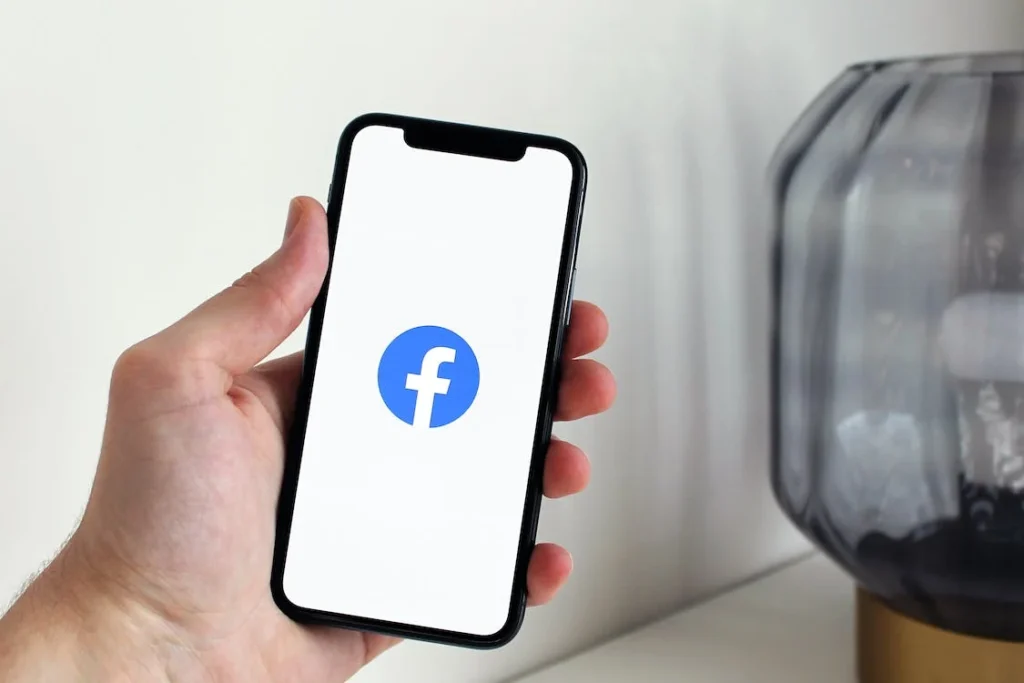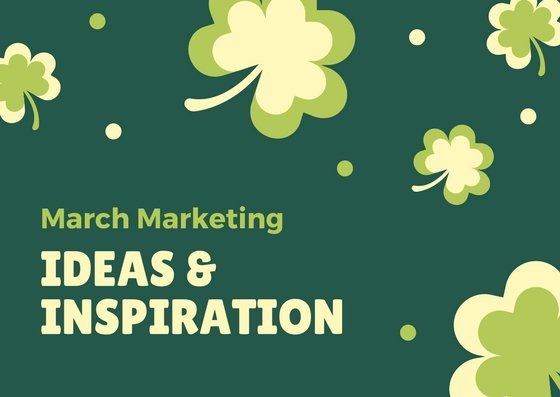Understanding Inbound Marketing
Inbound marketing is like inviting people to a great party using content they actually care about, cutting out the awkward cold calls or unwanted emails. It’s my go-to plan for making friends out of potential customers by offering them something valuable and directly relevant to their needs.
Core Components of Inbound Marketing
Here’s my game plan to put together a killer inbound marketing campaign: get to know who I’m talking to, whip up some top-notch content, and use tech to keep me on track.
Understanding the Target Audience: First up, I become best buds with detailed buyer personas. This means piecing together who they are and what they need so I can offer them custom content and solutions. By getting a handle on their likes, dislikes, and feedback, I can tweak my marketing efforts to hit all the right notes, whether it’s through SEO or social media. To make sure I’m actually hitting my targets, I set smart goals—not just your everyday goals, but ones that are clear, measurable, and realistic, all wrapped up in a tidy timeframe. It’s like baking a cake: get the mix right, and folks will be queuing up for a slice.
Valuable Content Creation: This is where I roll up my sleeves and create stuff folks actually want to read or watch; think blog posts about solving problems, ebooks loaded with tips, webinars that teach something new, and videos that are as fun as they are informative. By consistently delivering this kind of value, I earn the trust and attention of my audience, turning casual browsers into faithful followers of my brand.
Technology Utilization: This part is all about finding the right tools to keep tabs on how I’m doing and make adjustments on the fly. It’s like having a crystal ball, except it shows me real-time data on what’s working and what’s not, so I can keep fine-tuning my approach based on solid numbers and feedback.
Want some numbers to nerd out on? Check out inbound marketing statistics for all the juicy details on why this works and the kind of bang you can expect for your buck.
The Importance of Target Audience
Getting super specific about who my audience is is like setting up a GPS for my marketing efforts. Buyer personas are these handy dandy guides that help me aim my strategies right where they’ll hit the sweetest spot for my crowd (Raka Creative).
Knowing exactly who’s out there lets me make the whole interaction process feel natural and not pushy. Instead of going after folks with the hard sell, I attract them in a chill, organic way, using search engines and social media to show them what I’ve got. With the inbound approach—first impress, then convert, close the deal, and finally, dazzle—I can turn curious onlookers into die-hard fans and brand advocates.
The more I focus on understanding who I’m dealing with, the better my campaigns resonate, meaning more people are likely to hang around, make a purchase, and spread the word. For more tactics and tools on dialing in right on your audience’s frequency, check out our page on inbound marketing strategies.
Implementing Inbound Marketing Strategies
Let’s talk about inbound marketing. Over the years, I’ve found that nailing the right strategies is a big deal when it comes to sparking interest and boosting conversions. How do I do it? Well, it all starts with knowing your keywords, crafting irresistible content, and mapping out paths that practically lead users by the hand to conversion.
Conducting Keyword Research
Keywords matter big time, believe me. They’re the bridge to the folks searching for what you’ve got to offer. I arm myself with a bunch of tools to figure out which words will hit the right note—those with lots of eyeballs and fewer people fighting for the top spot. That’s how I ensure what I write not only sings in tune with search engines but also brings in the people who actually want to hear it.
| Keyword Metric | Definition |
|---|---|
| Search Volume | How often a keyword pops up in search bars each month. |
| Competition | Count of businesses trying to rank for the same keyword. |
| Cost-Per-Click (CPC) | What it’ll cost you to get someone to click on a paid ad for that keyword. |
By getting a handle on these measurements, I zero in on keywords that drive the right kind of traffic and give a nice SEO boost. It takes my marketing game to a whole new level, connecting with the crowd that genuinely matters.
Creating Compelling Content Offers
Rolling out the red carpet of content offers helps pull in the prospects, transforming them into solid leads. Stuff like ebooks, webinars, and toolkits filled with downright helpful tips and resources do the trick. According to Hive Strategy, make these offers so good that folks are willing to swap their contact details for a peek.
Creating offers that pack a punch can really push lead generation up a notch. Here’s a quick look at what I’ve got in my content arsenal:
| Content Offer Type | Description |
|---|---|
| Ebook | Deep dive into a particular topic—think of it as a downloadable encyclopedia. |
| Webinar | Either live or recorded, these deliver juicy insights or teach-the-teacher sessions. |
| Toolkit | A handy pack of tools set to tackle a certain task or project. |
These offers not only draw in leads but also show that my brand is the real deal in the industry. For more juicy tidbits, give our inbound marketing examples a look.
Designing Conversion Paths
Crafting smooth and inviting conversion paths is like rolling out the welcome mat for your leads, ushering them along the sales funnel. A typical path comes with must-haves like an attention-grabbing call-to-action, a focus-driven landing page, a form to snag some info, a thank you page, and a nifty follow-up email.
Here’s my checklist for keeping these elements top-notch:
- Call-to-Action (CTA): Whip up CTAs that are hard to ignore and get people clicking.
- Landing Page: Make sure it’s designed with care and speaks directly to your offer.
- Form: Short and sweet forms that make it easy for folks to leave their details.
- Thank You Page: Acknowledge them for their interest and tell them what happens next.
- Follow-Up Email: Quickly reach out to keep nurturing that budding relationship.
With this kind of approach, I create an effortless route for prospects, ushering them from curious clicks to committed conversions. Adopting these strategies boosts my inbound marketing campaigns for some top-notch results.
Lead Nurturing in Inbound Marketing
So, let’s gab about lead nurturing—it’s a fancy term for the art of befriending potential customers and keeping the sparks flying via spot-on emails and meaningful chats. Not just small talk, mind you. We’re talking about the kind of chat that makes folks want to hang out with you—and maybe buy stuff.
Implementing Automated Email Campaigns
If I’m gonna cozy up to leads, I lean hard on automated email campaigns. It’s kind of like setting a coffee maker on a timer so you wake up to that heavenly aroma. These emails tickle the brain cells at just the right moments, escorting folks from “Who are you?” to “Take my money!” Relax, folks—it’s not magic, it’s just having your act together.
A typical email lineup:
- A warm hug of a welcome note—hi there, thanks for dropping by!
- Tidbits of wisdom addressing their hair-pulling problems.
- “Pssst, check this out” offers—think eBooks or webinars, the good stuff!
- Later check-ins—”Still here? Here’s more goodies!”
- Newsletters that keep them in-the-know with trends and updates.
I dish these out using whizz-bang tools like HubSpot, which lets me turn on the charm without breaking a sweat, while keeping tabs on who’s biting (Bristol Strategy).
| Email Type | Purpose |
|---|---|
| Welcome Email | Say hello, make an entrance |
| Educational Content | Show off your smarts |
| Targeted Offers | Get them hooked with good stuff |
| Follow-Up Emails | Keep the convo flowing |
| Newsletters | Make sure they don’t forget you |
Moving Leads Through the Sales Funnel
Think of moving leads through the sales funnel like guiding them through an epic tale—first, grabbing their attention, then getting them hooked, and finally, sealing the deal. I get into their heads, figuring out exactly what makes them tick at every stage—whether they’re just curious, checking out the options, or ready to dive into a purchase.
Awareness Stage: I get my foot in the door with blogs or guides that tackle what’s bugging them. Trust-building is the name of the game here.
Consideration Stage: This is where I strut my stuff. Case studies, webinars, you name it. Helping them size up options and see the light.
Decision Stage: Time for the grand finale! Product deets, happy customer stories, and juicy offers swing the spotlight o’er this stage, vanquishing any remaining doubts.
All the while, I’m peeking into data-driven marvels to catch wind of lead behaviors. It’s a map for tweaking and refining how I cozy up to these folks over time.
By pouring heart and soul into both email magic and directing the sales funnel show, I don’t just rack up customers. I turn them into fans that come back for encores. Fancy a deeper dive? Check out some inbound marketing strategies that have knocked folks’ socks off.
Utilizing Marketing Automation Tools
So, here’s the deal: I’ve dabbled in inbound marketing and realized just how handy marketing automation tools can be. They don’t just make life a little easier but also help me make smarter choices with all that sweet, sweet data.
Importance of Data-Driven Analytics
Analytics isn’t just a buzzword—it’s a game-changer if you play it right. They let me peek at how my campaigns are doing, and make tweaks without losing my marbles. Keeping tabs on these numbers means I’m always improving and making sure my moves hit the mark.
| Key Performance Indicator (KPI) | Purpose |
|---|---|
| Customer Lifetime Value (CLV) | Figures out how much a customer’s worth over time. |
| Conversion Rate | Keeps count of how many visitors actually do what I want. |
| Customer Acquisition Cost (CAC) | Tells me what it costs to bring in new folks. |
| Return on Investment (ROI) | Checks how much bang I’m getting for my buck. |
Using tools that keep data collection on point lets me follow the entire journey from lead to loyal customer. Leadspace says that’s the secret sauce for knowing your marketing hits for the long haul.
Streamlining Inbound Campaigns
Automation tools like HubSpot are my right-hand dude in getting the right stuff to people just when they need it. They help manage everything from grabbing leads, figuring out who’s hot or not, and handholding potential buyers along their fact-finding mission.
Also, it’s smart to keep an eye on what each marketing move costs, and KPIs are my friendly neighborhood watchdogs for this. They help me track how well I’m pulling in traffic, sealing deals, and how much cash flies out with each new customer. By comparing all this, I fine-tune my game plan across the board.
Pairing automation with keen analytics, I’m gearing up my strategies to be top-notch. Staying in the loop with the latest scoop on inbound marketing helps me keep my edge in the digital jungle.
Benefits of Inbound Marketing
Alright, let’s gab about inbound marketing. It’s kinda like that secret sauce the cool kids are using to catapult their business without draining their wallets. Two standout perks? It’s easy on the budget and turbo-charges your SEO game.
Cost-Effectiveness of Inbound Leads
Here’s the tea: inbound marketing makes your dollars go further. Got some numbers for ya. As per Search Engine Journal, inbound leads are a whopping 61% cheaper than chasing those pesky outbound leads. Sounds like a no-brainer, eh?
Take this gem from Konstruct Digital—it claims you’ll drum up three times more leads for each buck you spend on inbound versus old-school, outbound strategies. That’s a lot of lead love!
| Marketing Type | Cost to Bag a Lead | Leads for Every Dollar |
|---|---|---|
| Inbound Marketing | 61% cheaper | 3x more leadz |
| Outbound Marketing | More expensive | Not as many |
And get this, a strong 59% of the marketing crowd insists that inbound tactics actually reel in higher quality leads. Who doesn’t want that? This switch to leaner, meaner lead-gen methods means you’ll likely see more conversions and a better return on your investment. Cha-ching!
Impact of SEO on Inbound Marketing
In the world of search engines, SEO is king. For inbound marketing to really pull its weight, SEO is everything. Your goal here? To get noticed—organically. In simple speak, that means being Google’s top buddy.
Here’s the scoop: the first spot on Google’s results page gets 33% of clicks. If you land in second place, you’re snagging only about 17% of the action. Big difference, right?
Maximizing your spot means sprinkling the right keywords through your site, jazzing up those page speeds, and building landing pages that are the stuff of digital dreams. And speaking of those, 80% of eyeballs float straight to the top 10% of those well-groomed landing spots. Make yours count.
These sneaky-but-smart tweaks ensure your biz isn’t just shouting into the void, but actually chatting with folks searching for what you provide. Nailing this could mean bigger, better wins with customers who are already halfway sold before they even knock on your door.
Wanna go deeper into inbound wizardry? Check out our pieces on inbound marketing strategies and inbound marketing tools. They might just give your marketing mojo the lift it needs!
Leveraging Social Media in Inbound Marketing
Building a Loyal Audience
Social media’s the goose laying golden eggs when it comes to gathering a crowd that’s here to stay. I’ve noticed that when people have a good run-in with a brand on social media, they don’t keep it to themselves. Actually, a whopping 71% spill the beans to their friends (Forbes). My trick? I keep the conversation buzzing. Answering questions, tossing in useful stuff, and creating a warm neighborhood vibe ensures folks come ’round again and again.
Jumping on sites like Facebook, Instagram, LinkedIn, and Twitter helps me genuinely connect with my audience. This two-way chatter strengthens brand loyalty, making customers feel like they’re part of the gang. Social media isn’t just a megaphone for blasting out your message; it’s the perfect stage for chatting and listening, which means I can get a feel for what my people enjoy and tailor the content just right.
Enhancing Brand Awareness
Social media’s a powerhouse for getting your name out there. It’s like sending your message on a fast train with stops at every possible platform, from videos to blog posts. The buzz can spread far and wide, soaring beyond the usual search engine limits (Crownsville Media). Unlike standard SEO content, posts on social media are the life of the party—users love to pass ’em along.
Plus, social media gives my SEO a nice boost. I’ve noticed that by smartly using social platforms, my site creeps up the search rankings, bringing more folks to my digital doorstep. A solid social media plan isn’t just about getting seen. It’s about crafting a reputation and earning trust among my target crowd.
Stirring social media into my inbound marketing recipe keeps the customer conversation rolling, amps up how often folks see my brand, and builds a dedicated following. Social media isn’t just about rounding up new fans. It’s a trusty companion for hanging onto loyal customers, which is absolutely critical for a business plotting a course for long-term success.
Importance of Landing Pages
Landing pages are my secret weapon in turning visitors into folks who keep coming back or better yet, customers.
Conversion Crucial for Business Success
Apparently, 80% of clicks happen on the top 10% of landing pages (Forbes). You want those precious visits to stick around and do what you want them to do, like sign up for our awesome newsletter, check out a download, or grab that must-have item you’re offering.
For a bit of context on what’s working out there, here’s some nifty data showing the connection between top-notch landing pages and people actually doing what you want them to do.
| Landing Page Feature | Average Conversion Rate (%) |
|---|---|
| Clear Call-to-Action (CTA) | 30% |
| Focused Content | 27% |
| Targeted Audience | 24% |
| Compelling Visual Elements | 21% |
| Mobile Optimization | 20% |
Getting the landing pages to play nicely with what you want leads to a jump in good results, making them super important to my marketing schemes.
Optimizing Landing Pages for Conversions
So, how do I get those landing pages to crank out results? Here are a few tricks up my sleeve:
- Clear Call-to-Action: Your CTA should scream out the next step for users. Make it clear as day why they should follow through.
- Simplified Design: Keep it simple, folks. No clutter. Just a pure focus on the endgame. Less is often more when it comes to layout.
- Targeted Content: The words and ideas should speak directly to what people are looking for. Good research on what your audience cares about plus those sweet keywords can make all the difference.
- Mobile Responsiveness: These days, people are glued to their phones. Gotta make sure everything looks and works great no matter the screen size.
Using these techniques can breathe some serious life into my landing pages and bring in more useful actions. To dig deeper into making leads happen, feel free to check out some of our great examples through inbound marketing examples. By keeping an eye on how I can tweak and improve my landing pages, I’m paving the way to better user experiences and more conversions.
Power Up Your Email Marketing Game
Email marketing is like having a secret weapon in your back pocket. I’ve made some smart moves and watched customer engagement skyrocket. It’s like sprinkling a little magic onto your connection with folks.
Cracking the Code with Emails
Sending the right emails to the right people is where the magic happens. It’s all about diving into that treasure chest of information you already have about your audience and making it work for you. Believe it or not, when you get this right, you’re talking about jaw-dropping figures, with some folks seeing massive increases in the money they rake in just from emails. (Thanks, Forbes)
Consider breaking down your email lists by:
| Type of Slice | What It Involves |
|---|---|
| Demographics | Age, gender, where they hang out |
| Behavior Patterns | What they’ve bought, how often they read your emails |
| Personal Interests | What they care about, how they live |
| Customer Journey | Whether they’re just meeting you or ready to commit |
By zoning in on these areas, I can whip up emails that hit home. This little tweak means more folks opening and loving your emails, which is the whole point, really.
Keep Them Coming Back with Emails
Email ain’t just about getting new eyeballs. It’s about keeping the ones you’ve got happy and coming back. Regular emails are like checking in with an old friend. It keeps everything warm and fuzzy. Sharing new stuff, sweet deals, or just some cool content helps foster loyalty.
You know what’s cool? Sending personalized follow-ups can bring people back, making them stay longer. Studies say sticking with emails can majorly boost how much a customer is worth over time. Tools like HubSpot can help make all this a breeze (Bristol Strategy).
Here’s a quick cheat sheet on different kinds of emails you might want in your mix:
| Email Kind | What It Does |
|---|---|
| Hey There! | Break the ice with new folks |
| Sales Alert! | Shout about those sweet discounts |
| Knowledge Nuggets | Share the wisdom, drop some knowledge |
| We Miss You! | Bring back the ones who’ve drifted away |
Stick with these, and you’ll probably see an uptick in loyalty and success. For some more juicy tips on tweaking your email tactics, swing by our posts on inbound marketing tactics and inbound marketing strategies.




















